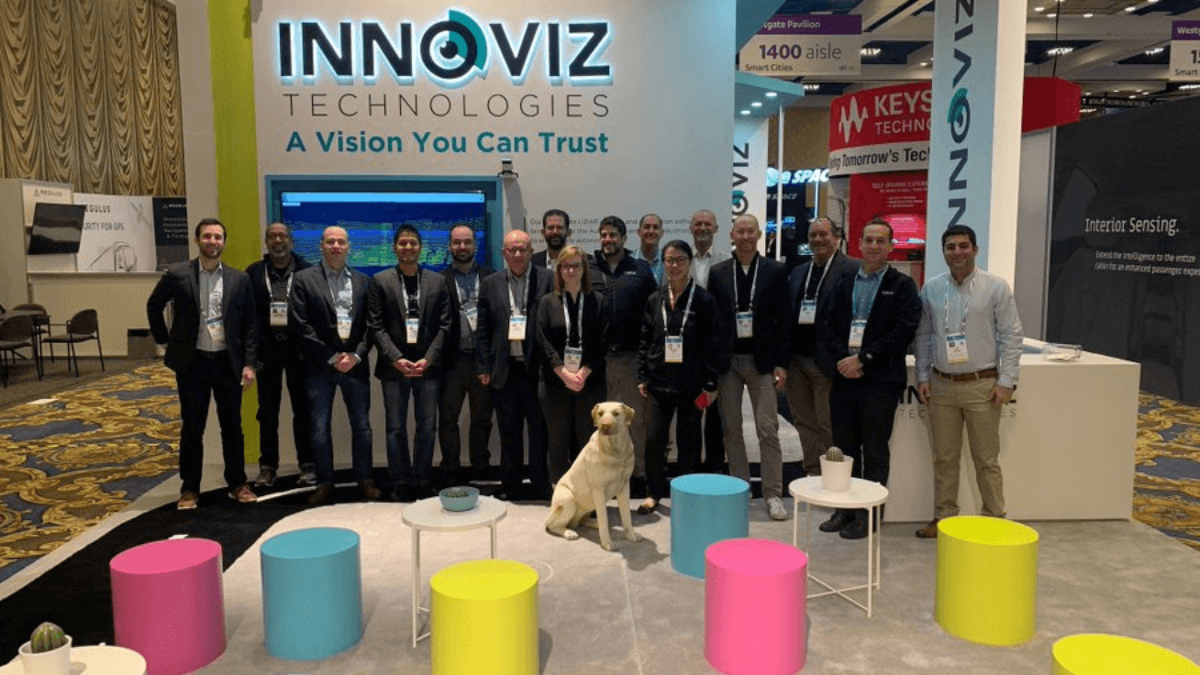
The Consumer Electronics Show shows off the latest and greatest in consumer technology, displaying everything from hand-held devices to full-fledged automobiles. Continuing the trend of previous years, CES showcased self-driving cars as well as supporting technologies, LiDAR and perception technologies among them.
Everyone is looking for a competitive edge to curb consolidation
Autonomous vehicles have been at the top of mind for LiDAR companies for the better half of the past decade. 2017 saw a flurry of investment in perception companies peaking at nearly $350M USD, and the excitement seemingly hasn’t stopped since. Walking the show floor, LiDAR start ups were on nearly every corner, while large companies like Pioneer showed competitive perception solutions.
Press predicted LiDAR consolidation throughout 2019, perhaps why consolidation came up so often in discussions. It’s clear that, either as a result of shared fears of losing the battle or as a means of competitive differentiation, an increasing number of LiDAR companies are looking for ways to take the lead in the automotive market.
One such means of taking the lead is through Tier 1 partnerships, like the latest Innoviz/ Harman partnership. Industry partnerships are a key means of anchoring status within an industry, and a great way to work collaboratively to improve quality, safety and reliability of LiDAR and perception products. CEO and Co-Founder Omer Keilaf recently commented on the challenges in bringing new automated driving technology to the high standards of the automotive market in Forbes. The article touches on the vast array of technologies incorporated into autonomous systems, which explains part of why consumers haven’t yet seen Autonomous Vehicles roaming the streets.
Automotive applications pave the way for LiDAR use cases elsewhere.
The autonomous vehicle revolution is taking longer than initially expected for a number of reasons. Regulation is taking longer to pass than anticipated, while the safety of the technology and standards that should be held to are still being debated. Particularly in the context of vehicle safety, the added benefit of automotive-grade sensors could make or break the competitiveness of a LiDAR startup in this market. However, it requires technical excellence and financial investment many startups aren’t equipped to shoulder alone.
Becoming automotive-grade is a long process of design, testing, validation, retesting and revalidation of your LiDAR technology. “Automotive grade” is a buzzword in the market, but Innoviz has taken this a step ahead of the competition with InnovizOne, a solid state, automotive-grade LiDAR solution, specifically designed for automakers, robo-taxi and delivery companies.
At CES, the industry was blown away by the resolution and performance of InnovizOne. This product’s exceptional face-value performance is supported by tremendous, behind-the-scenes efforts from the Innoviz team, which turn great technology into an even greater ready-to-use product. The InnovizOne Perception package is an excellent example of this work, which boasts automotive grade functional safety, even with its AI architecture using Convolutional Neural Network (CNN) technology. Software coding according to ASPICE guidelines is another example of development efforts which are not regularly discussed, but verify a product would behave as expected.
While some LIDAR start-ups continue to pursue automotive applications, other startups are targeting different applications. LiDAR for smart cities is increasingly popular given privacy concerns, something Innoviz understood long ago with our LiDAR solutions. Whereas traditional camera solutions can collect and interpret data that may not be General Data Protection Regulation (GDPR) or privacy compliant, specific information, like that of facial recognition, license plate numbers, biometrics identification etc. is not possible with LiDAR. That being said, object classification of cars or pedestrians are easily achieved, meaning that LiDAR is well-positioned for general tracking and traffic load balancing, among a wide variety of other use cases.
One-stop-shop LiDAR solutions
In keeping with the competition, many LiDAR companies are shifting towards a one-stop-shop model with a portfolio of products to attract more applications. This includes technologies ranging from spinners, high-end front-looking to low-end low range, and high FoV. Furthermore, many LiDAR companies have added perception capabilities to their portfolio, either through independent development or partnerships, something that Innoviz has done ahead of its time with InnovizPro, offering perception capabilities with partners such as FEV, Seoul Robotics and SoftRide. Though many companies looked to add capabilities – few were automotive grade.
In conclusion, it was another exciting year for the automotive industry and advancement of LiDAR. Innoviz is thrilled to be a part of the innovative community making autonomous vehicles mainstream. We look forward to exploring new use cases for LiDAR technology in 2020. Roll on CES 2021!